What is a helpdesk chatbot?
Helpdesk chatbots instantly pull information to provide immediate, accurate answers to questions. Businesses that use AI-powered helpdesk chatbots gain advantages over those using traditional helpdesks. They empower teams to work tickets faster while saving time and money. Helpdesk chatbots remove the hassle of searching through endless documents and databases, making for a better employee and customer experience.
Helpdesk chatbots can transform businesses by changing how support teams work, yet according to Gartner, only 54% of people use some form of chatbot or conversational AI platform.
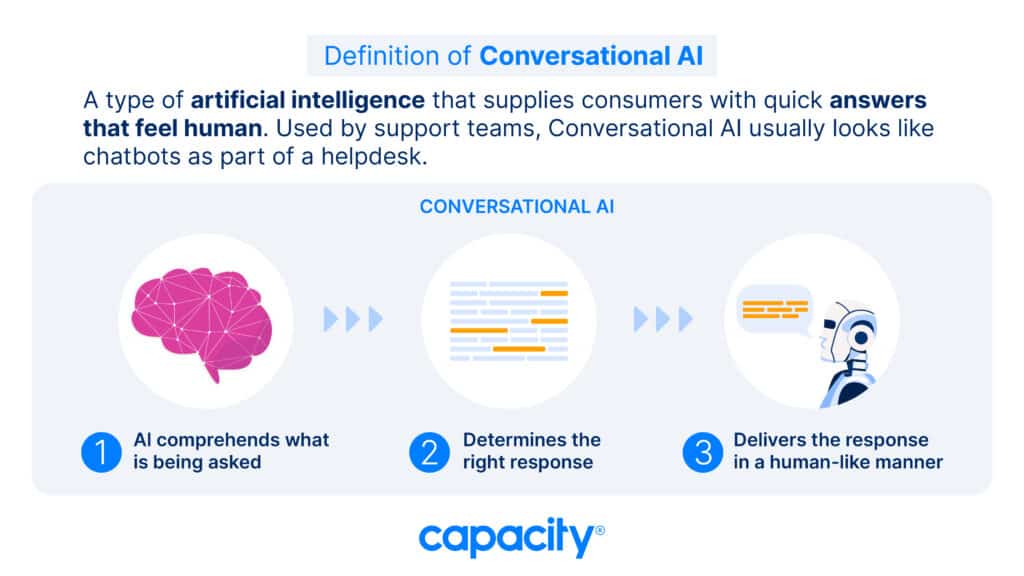
What’s the difference between a Chatbot vs Conversational AI?
While most modern chatbots have AI capabilities, many lack qualities that feel human. The prime difference between traditional chatbots and conversational AI is the bot’s ability to understand, learn, and respond to human language.
Take this example:
Susie is under a strict deadline. She’s trying to create a support ticket. She goes to the helpdesk chatbot for assistance and types, “I ned help filling a tijet.” Since Susie was in a hurry, typos occurred in her message.

A traditional chatbot would respond with an error message, prompting Susie to ask her question again.
A conversational AI chatbot would respond despite her typo, giving Susie an accurate answer to her question, thanks to Natural Language Processing (NLP) and machine learning.
4 Benefits of Helpdesk Chatbots
AI chatbots have come a long way. As chatbots have evolved, they are now integrated into helpdesks, ushering in a host of benefits for support teams.
1. Helpdesk Chatbots = Better Customer Experience
Support teams use helpdesk chatbots to enhance the customer experience. Imagine a time when you received excellent customer service. Chances are, you were looking for an answer to a question and received a response that solved your problem immediately.
As the volume of inquiries rises exponentially, support teams become overwhelmed with tickets and cases and need help to provide exceptional service 100% of the time. Over 80% of consumers and B2B buyers agree that a company’s customer experience is just as important as its product or service.
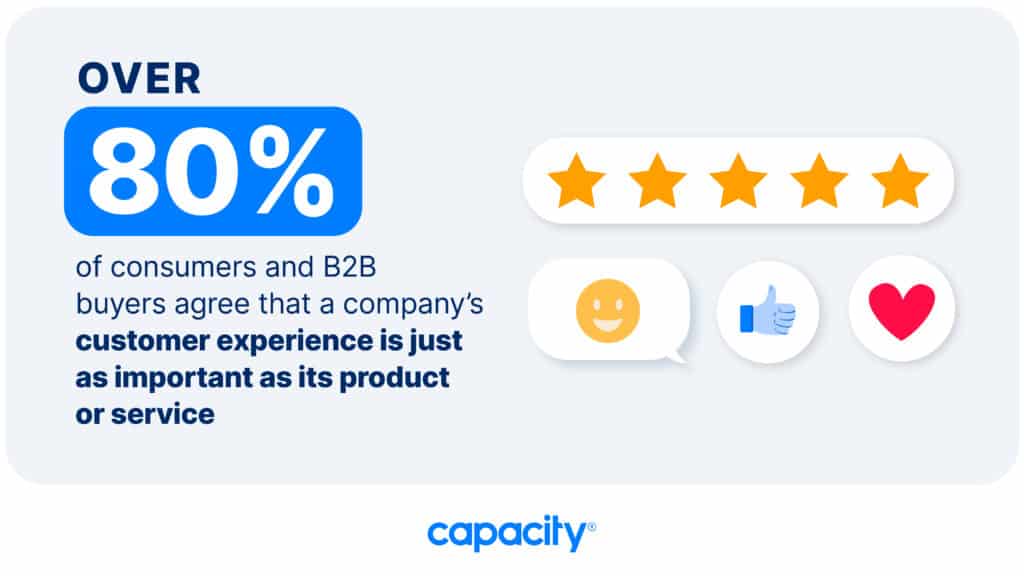
2. Find Data Faster with Helpdesk Chatbots
How many hours do you spend searching for one piece of information? Intranets designed to help locate information have become houses of chaos. Helpdesk chatbots help alleviate this chaos by stepping in, so humans don’t have to do all the heavy lifting.
Using AI technology, these chatbots instantly find and pull data from your intranet and hand it to you or your customers on a silver platter.
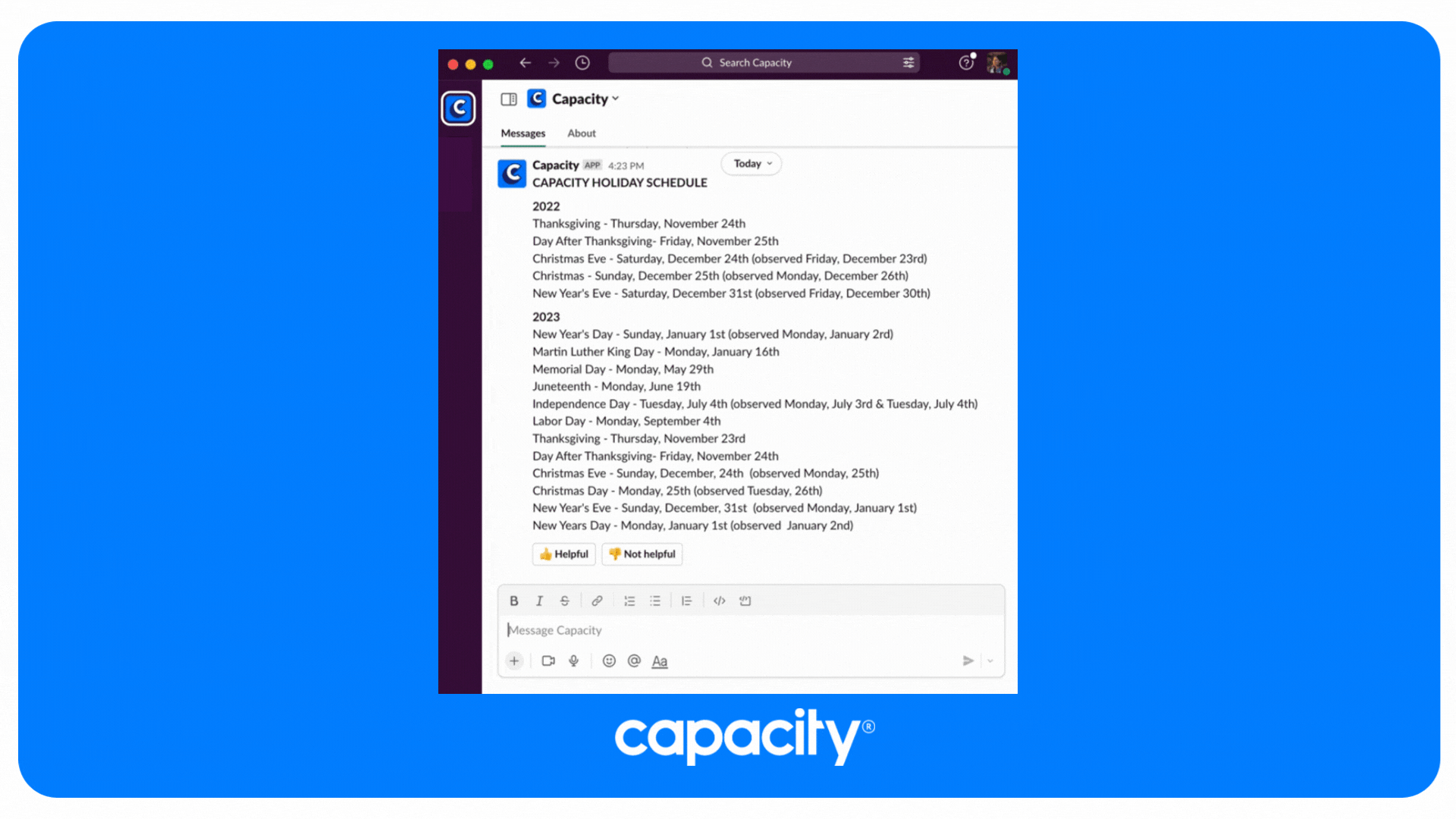
For example, a helpdesk chatbot can grab information from your tech stack apps and send you an answer in the blink of an eye on your communications tool of choice, such as Slack. What would take several minutes or hours now takes seconds.
3. Chatbots Improve the Employee Experience
For many of us, a large part of our work week consists of searching for files, sifting through emails, and attending 11 to 15 meetings. It’s estimated that employees spend 61% of the week dedicated to “work about work,” leaving just 39% dedicated to role-specific responsibilities.
Helpdesk chatbots free up teams to spend more time on human-centered tasks. Instead of answering 20 questions about password resets, an AI-driven chatbot encourages self-service by securely and automatically sending instant, personalized responses to users.

4. Scale Without Increasing Support Costs
It’s no surprise customer expectations are high and continue to skyrocket. While consumer expectations rise, support teams can’t keep up with demand. Using AI helpdesk chatbot tech, teams can scale without increasing long-term costs.
How can AI chatbots help support teams?
Through RPA and machine learning technology, AI chatbots can save support teams time and money.
Over half (57%, to be exact) of business leaders feel that conversational AI chatbots provide a significant ROI on minimal investment.
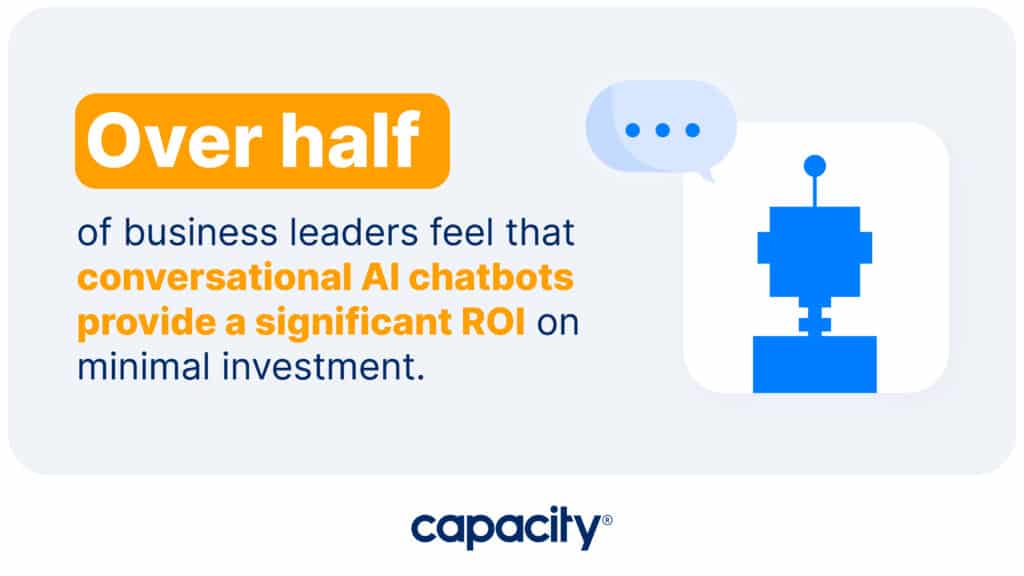
Think of a helpdesk chatbot as an addition to your team. These bots automate Tier 0 and Tier 1 support for teams, freeing them up to focus on more strategic tasks. Thanks to conversational AI, helpdesk bots can assist humans by understanding acronyms and typos. Let’s take a look at customer support with the ITSM pyramid in mind.
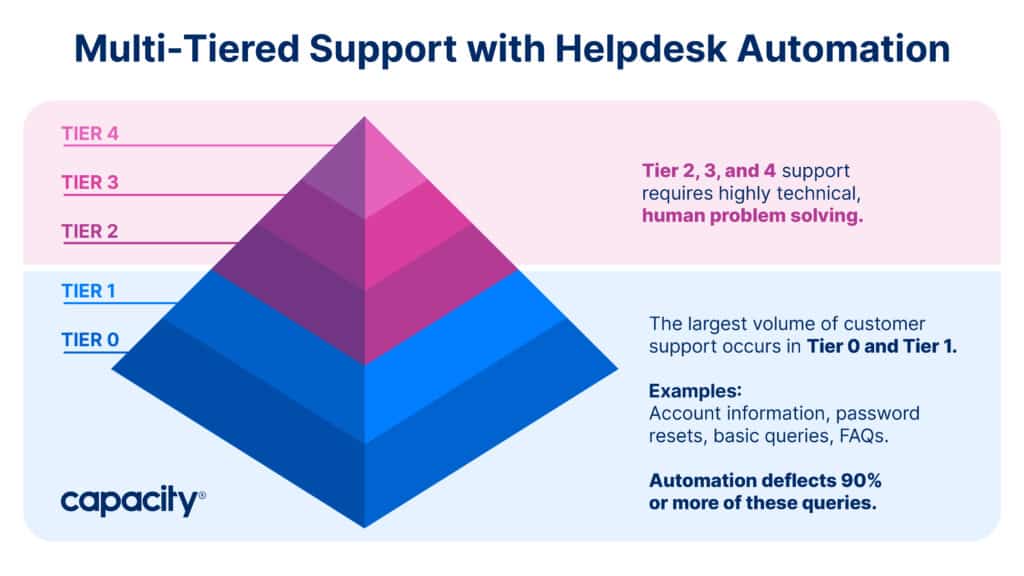
3 Helpdesk Chatbot Examples
Helpdesk chatbots can support teams from various industries and departments. Here’s a look at a few use cases:
1. Helpdesk Chatbots + HR
HR teams are extremely bogged down with questions and issues – From onboarding a new team member to managing team member info. HR helpdesk chatbots can relieve HR professionals from searching high and low for employee information.
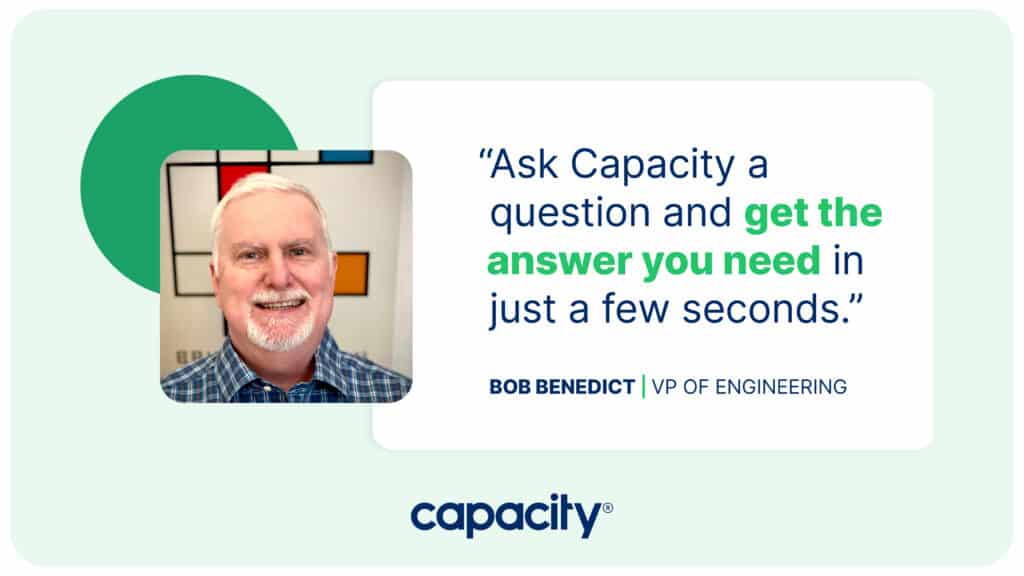
2. Helpdesk Chatbots + IT
If IT teams had a dollar for every time they were asked to reset a password, they would be rich. IT helpdesk chatbots deflect tickets and emails away from teams before they reach the queue by helping internal teams self-service their way to a solution. IT and engineering teams use AI chatbot technology to close tickets faster.
3. Helpdesk Chatbots + Customer Support
After spending hundreds of hours ensuring customers are taken care of, customer support teams hardly have time to start new initiatives. A helpdesk chatbot can save time and increase customer satisfaction and retention.
Find information and docs whenever, wherever. The best helpdesk chatbots integrate with your most used apps, such as Slack or Microsoft Teams.
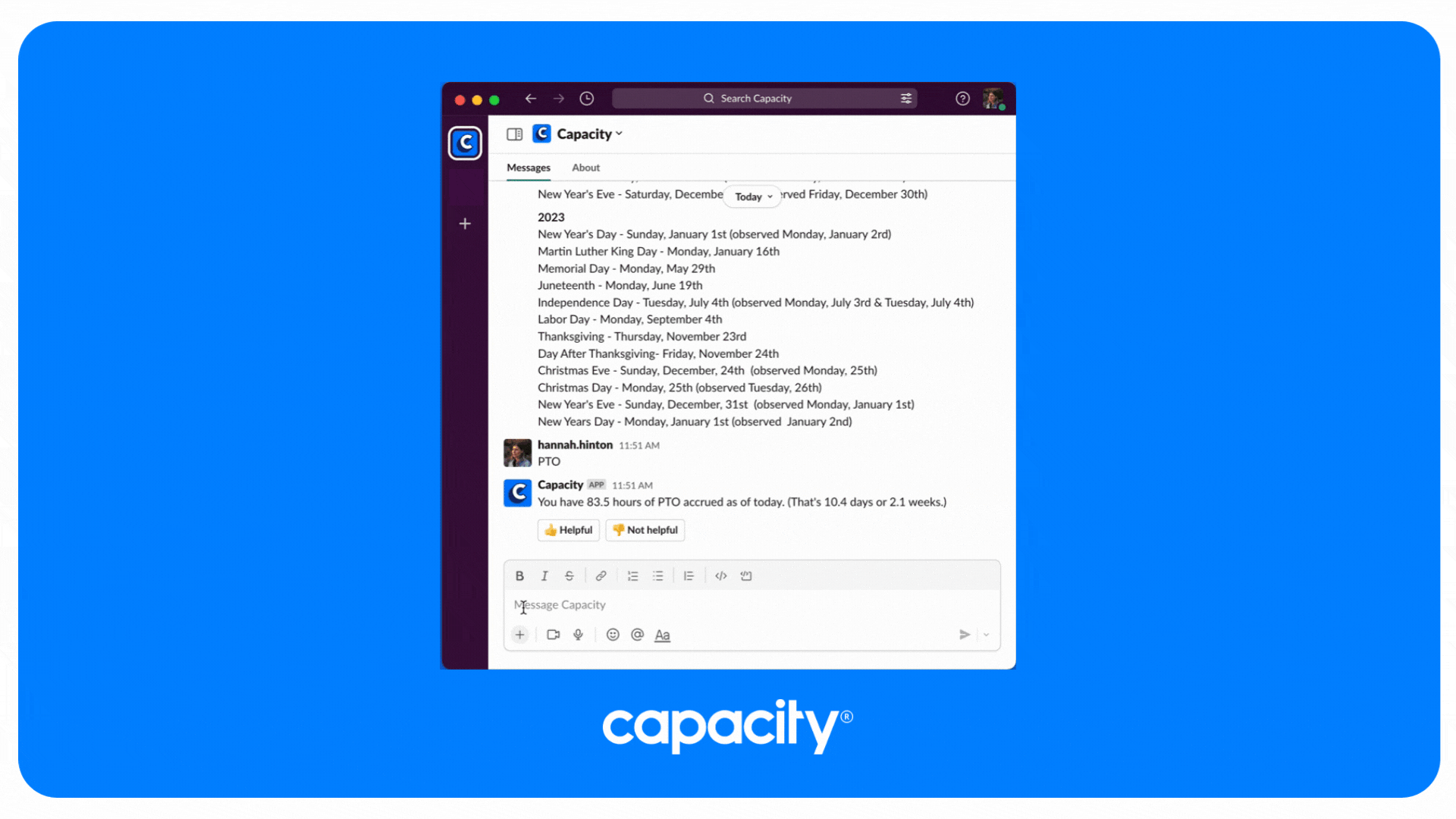
3 Steps to Create a Helpdesk Chatbot
Businesses can implement a helpdesk chatbot in many ways, but here are a few places to get you started.
1. Identify FAQs & Repetitive Tasks
Think through all the repetitive questions your team gets asked. There’s a good chance the majority can be streamlined through helpdesk automation. Common questions and tasks can include, but are not limited to:
- Password resets
- Internal tech support requests
- How-to instructions
- Pulling customer data from a CRM or database
- Email and ticket deflection
2. Get an AI-powered Knowledge Base
Once you know what you want to automate, place everything in an AI knowledge base. AI chatbots and knowledge bases work together to provide instant, accurate responses where you need them, like your website or applications and internal tools like Slack, Microsoft teams, etc.
As customer questions rise, it’s estimated that by 2025, 95% of interactions will be fielded by AI-driven solutions.

3. Implement a Helpdesk Chatbot
It’s a challenge getting teams to adopt new tech. Once you implement a new helpdesk chatbot solution, you’ll figure out where the gaps are and how to make things even more efficient.
Through machine learning and a little human help, helpdesk chatbots get smarter by providing feedback. Once the bot receives this feedback, it will automatically add the question to the knowledge base, so the next time it notices a similar or identical question, it can provide a better answer.
Meet Capacity: Your Chatbot Helpdesk Platform
Automating your helpdesk is no longer an option for businesses that want to stay successful–it’s a need.
Capacity was built with all of these complex business problems in mind. It was not an afterthought. Capacity’s AI chatbot technology goes beyond just a simple back-and-forth conversation. Deflect tickets from hitting your team’s helpdesk, and answer over 90% of FAQs from team members and external customers.





